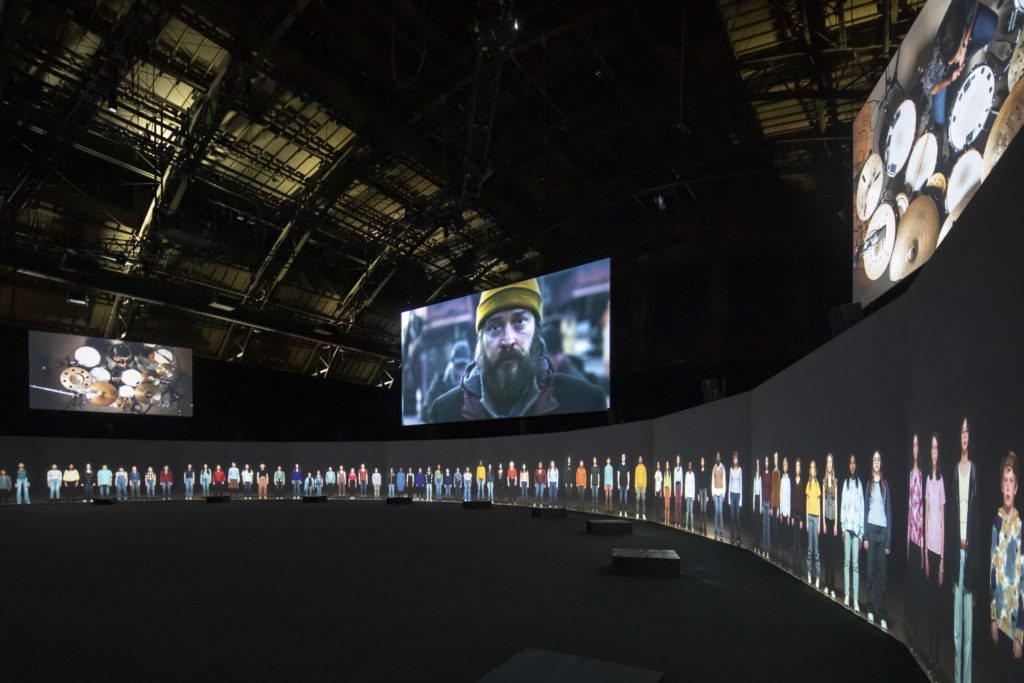THE HANGOVER REPORT – Julian Rosefeldt’s immersive, genre-straddling film installation EUPHORIA hypnotically investigates the history and merits of capitalism
- By drediman
- December 13, 2022
- No Comments

Last week at the Park Avenue Armory, I had the opportunity to catch Julian Rosefeldt’s Euphoria. The immersive film installation is a follow up to Manifesto (which was also seen at the Armory’s massive drill hall), Rosefeldt’s acclaimed film ubiquitously starring Cate Blanchett in a number of guises reciting various artist manifestos. The filmmaker’s latest work, also conceptually focused on a grand scale, is in essence a meditation on the history of capitalism — and by extent, greed — and a passionate investigation of whether the framework remains adequate as society’s guiding principal.
Playing on a continuous two-hour loop over the course of the day, the film is pinned down by a series of philosophical debates over the merits and relevance of capitalism. Dispersed between these theoretical discussions, however, are a parade of dreamlike sequences composed of haunting imagery. These viscerally-charged, often topsy-turvy interludes (e.g., a euphoric dance break, various musical numbers, a raging fire, a hurricane, the occasional appearance of animals — even one that speaks and sings) bring to the film variety and a sense of impending doom. There’s little doubt that Rosefeldt’s intent is to transcend traditional filmmaking and consciously straddle genres, as evidenced by the work’s performative and art installation qualities. Indeed, there’s something staged or theatrical about the whole endeavor. For example, the musical sequences — much of which are accompanied by a children’s choir (made up of 140 singers from the Brooklyn Youth Choir, who are making their big screen debut) and a band of percussionists (Grammy Award winners Terri Lyne Carrington and Peter Erskine, who play alongside Yissy García, Eric Harland, and Antonio Sanchez), both of which visually and sonically surround the audience — clearly draw from operatic and even movie musical traditions (e.g., the work’s choreographic centerpiece, which takes place in a bank, calls to mind a Busby Berkely spectacle).
Although there’s much to admire about the film, the portions involving verbal debates start making repetitive points after a while, which may irk less patient viewers. However, if you allow yourself to be fully immersed in Rosefeldt’s inquisition, you’ll likely find yourself mesmerized (as is is typically the case when attending art installations in general). In terms of cinematography, I was particularly enthralled by the sustained topographical shots which provide audiences a bird’s-eye view of New York City. These sweeping views of the city invariably cast a spell, giving the impression of the fragility of man-made constructs (both physical and conceptual), as well as larger forces at play.
Just to note, there’s also something subversive — and once again, no doubt intentional — about watching Euphoria just blocks away from the headquarters of some of the world’s largest banks and financial institutions. Rosefeldt makes sure that the revolution stealthily starts at the heart of it all.
RECOMMENDED
EUPHORIA
Immersive Film Installation
Park Avenue Armory
1 hour, 55 minutes (without an intermission)
Through January 8

 Copyright © 2024
Copyright © 2024
Leave a Reply